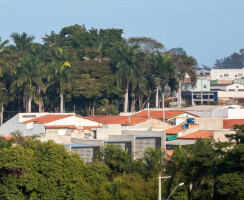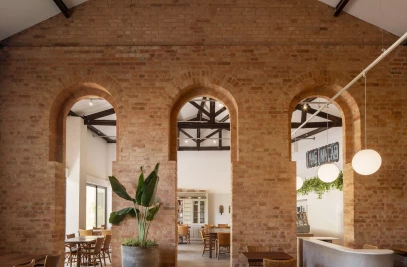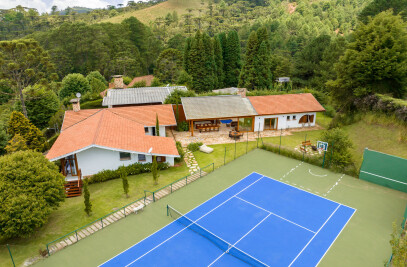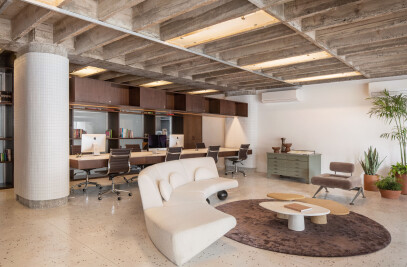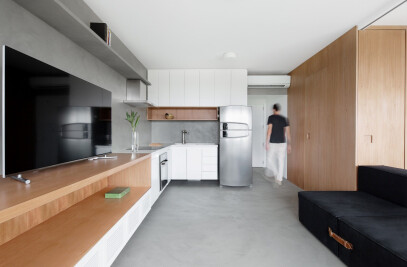In a slightly uphill corner plot positioned perpendicular to one of the main traffic routes in the center of Cesário Lange, a city near the state capital of São Paulo, five warehouses were established to absorb various types of commercial and service activities. The initial premise for the project was flexibility, mainly due to the lack of definition of the programs that the modules of just over 90sqm would host. Initially, it was thought that these warehouses would be occupied by uses such as convenience store, pharmacies or small workshops, but it was not known how the building would be welcomed by the population of the city.
In order to ensure that this uncertainty did not limit the commercialization of the spaces, the architectural design intended to be as flexible as possible, allowing a diverse range of uses and activities to be held inside the spaces. In addition to that, since the beginning of the design process the tight budget for construction stipulated by the client was considered, aiming a low initial investment and a fast financial return with the incorporation. Therefore, the project was developed by exploring structural planes that were modulated considering that the spans between them would be easily overcome without the need of complex structures, simplifying the bearing of the mezzanines and the roof.
To emphasize the structural solution and reduce the final cost of the building, these structural plans were built out of uncoated concrete blocks. In between these elements, outstanding in the architectural composition, pieces of glass brick and roll-up steel doors were inserted to fulfill the function of access and natural lighting without the need for window and door frames. About the site plan, a raised square was placed on the street corner, facing the busiest road and directly serving the first warehouse that had the potentiality of having a unique relationship with the outer space and the sidewalk.
The other warehouses have independent access by the adjacent street, of less urban importance. Upon the completion of the construction, a curious fact was remarked. As the building stood out from the other buildings of the city of just under 20,000 inhabitants and unprovided of buildings with similar characteristics, bars and retail stores started occupying the spaces, much different than the uses that were initially considered.





